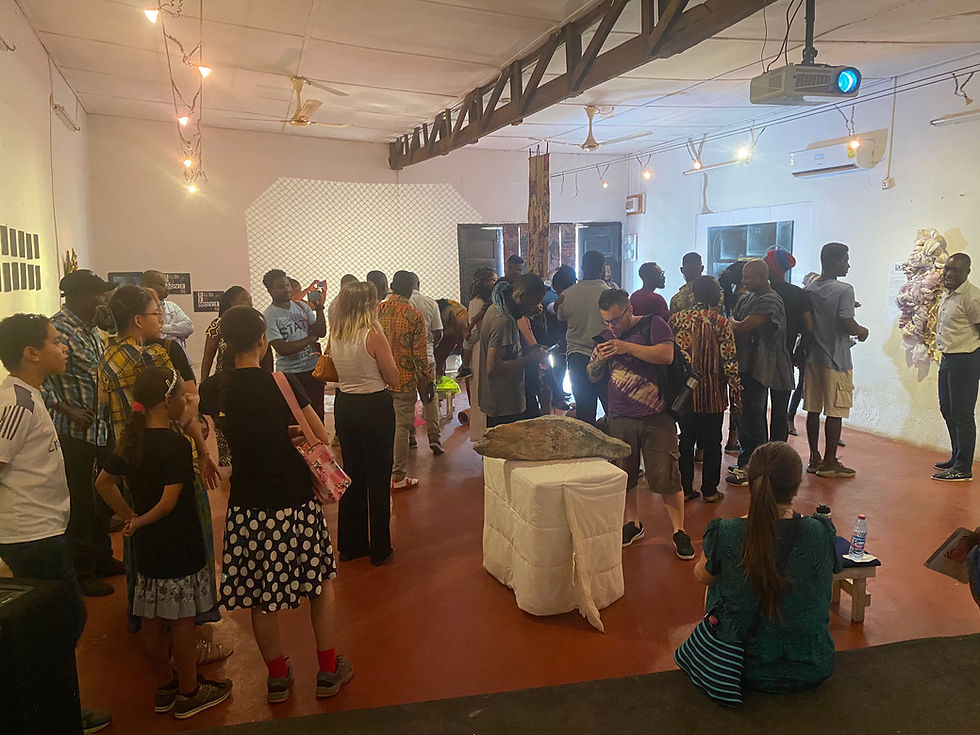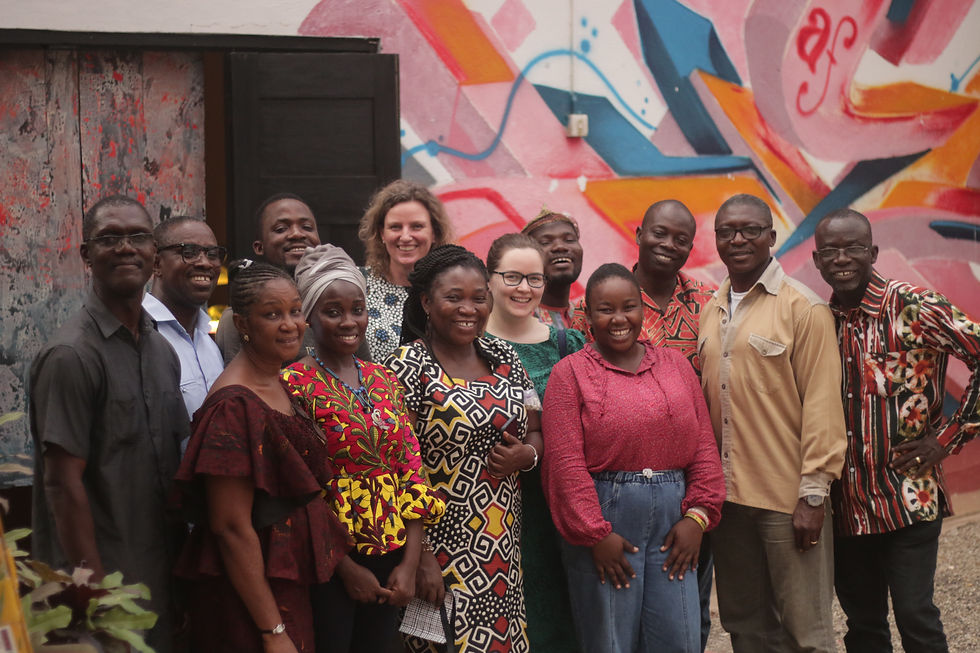Using Art as a Research Method in Studies of Creative Work
- Creative Industries Ghana

- Feb 24, 2022
- 4 min read
By Thilde Langevang and Robin Steedman
Why art in research?
Art can captivate and move us, but it can also make us understand the world in new ways. For this reason, it is increasingly used as a method in social scientific research.
Arts-based methods are valuable in research since they allow research participants to express emotions, thoughts, and experiences that are not always easily expressed through conventional methods such as interviews. These methods also have considerable potential for fostering collaboration between academic researchers, artists and community members.
Despite this potential, creative work studies have rarely used art as a research method. This neglect is puzzling insofar as art and artistic modes of knowing constitute a common method of expression and inquiry for many creative workers.
In a recently published paper in the journal Cultural Trends, we build on our experiences of conducting an artistic research workshop in Ghana. We argue that creative work researchers can benefit from using such collaborative arts-based methods that are attuned to the affective and communal character both of creative work and of knowledge generation itself.
The artistic research workshop
Our artistic workshop was held over a five-day period in 2020 in Kumasi, Ghana and brought together seventeen artists representing a mix of artistic professions including filmmakers, painters, sculptors, fabric artists and performance artists.
Each artist was tasked with producing artworks using their preferred medium to express their experiences and imaginaries of being an artist in Ghana. In order to understand their art practice more deeply, we also held daily group discussions and interviewed each artist individually.

We used three thematic prompts to structure the days and to guide both the discussions and the production of the artworks: the artist as worker, the artist as entrepreneur, and the artist as visionary. We left it completely up to the artists themselves to decide how they wanted to approach these three themes.

Exhibiting as research dissemination
At the end of the workshop the artists put together an exhibition at the Alliance Française premises in Kumasi. The process of putting together the exhibition was led by the workshop participants themselves and it was they alone who decided how to arrange their art objects in the physical gallery space. The exhibition allowed us to share our findings in a novel way and to reach new audiences.

We found that sharing our research findings through an exhibition allowed for the evocation of multiple meanings. This was clear, for example, in the work and words of Mantey Jectey-Nyarko, a visual artist who described his art-making process as a form of “child’s play” with “no end point, only a point of departure”. Mantey asserted that it is up to the audience to interrogate the shapes and colours he presents and to make meaning from them: “Meaning only manifests when the art piece meets a viewer”, he stressed, and “does not exist intrinsically within the piece itself”.

Our conversations with the visitors to the exhibition demonstrated the potential of art to evoke diverse and strong responses. A student who attended the exhibition said she had previously not really perceived art as “work” or even appreciated artistic work but that the exhibition had “changed my views on artists and opened up my mind to see”.
Many of the visitors expressed their appreciation of the opportunity afforded by the exhibition for close encounters and interactions with artists and their works. A woman from Kumasi, who attended the exhibition, said:
For me, although the Internet and other new media platforms open other possibilities for engaging artworks, my physical presence in this exhibition enables me to interact with the art and the artists who curate the art and the meaning they carry. So being armed with such knowledge is eye-opening for me.
Unravelling the role of relationships and care
Our analysis of the rich and multifarious data generated by the artistic workshop revealed that the method was highly effective in bringing to light the ethical considerations and interpersonal connectedness and interdependencies that underpin creative work.
The importance of intimate relationships was explored very explicitly in Dorothy Amenuke’s work that carries the title: Relationships, Relationships!!!

In the process of making the artwork Dorothy gathered and stitched together used cloth materials from her relatives and friends and from her own wardrobe:
I take materials from individuals that I relate with. So I took their clothes, I cut the clothes into pieces […] So I cut them and rearrange them within a space. And my idea of space is not…although it is not a void, it comes with us bringing things together in different ways, okay, and so I consider the surface on which I work as this big space that all these relationships are happening [in].
The workshop further helped to foster respectful, attentive and affective relationships among the research participants and between the participants and researchers. And this supportive environment encouraged participants to reflect on their practice in new ways. As one participant said:
The reflection, for me, was a very important aspect of the workshop that helped me to rethink a lot of things. A lot of the ideas and decisions I have made previously that is pushing my art, how am I thinking about them now?

Artistic workshops can generate valuable new ways of knowing. You can read more about our research process and findings in our new article in Cultural Trends.
Read the full paper here: https://www.tandfonline.com/doi/full/10.1080/09548963.2021.2016351





Comments